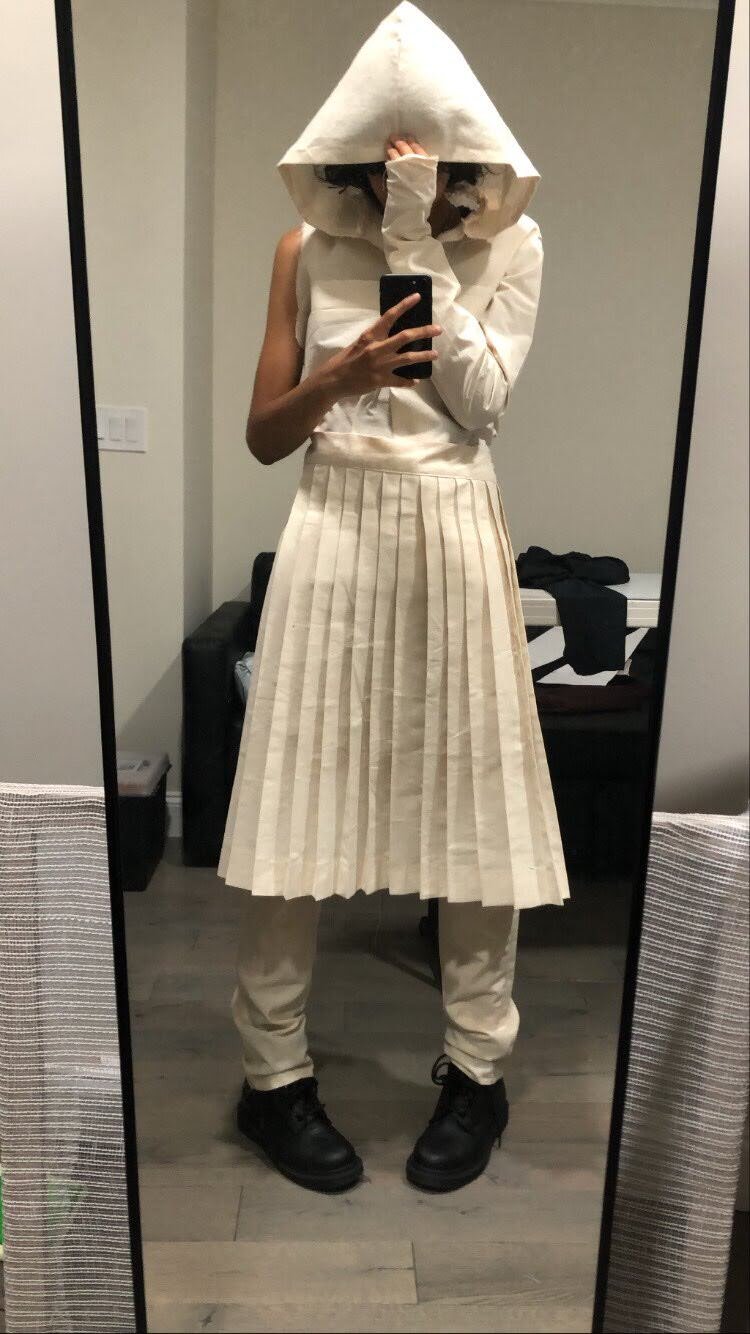Carefully Designed: A Conversation with designer, Aria Puga
Written by Kennedy Smith
Meet Aria Puga, a Virginia-native currently residing in Brooklyn, New York. They create without limits - designing clothes, furniture, and dabbling in photography. Born in Manhattan, they always had a tie to New York. After living most of their life in Virginia and being attracted to the liveliness of a big city, they decided to reconnect with their roots.
If you have yet to see their work, their designs are “implemented in sustainable practices, tech advancements and scientific engineering” and are currently in motion to expand into more forms of art beneficial for our planet.
Aria and I know one another from a previous project online, but finally met in-person during my visit to New York in September of last year. I had the pleasure of catching up with them in our conversation below.
What are you currently up to?
I’ve been trying to keep myself busy as much as possible. I know it’s not good to keep yourself rolling instead of rest and take a step back to reflect on where you are. I had that when corona [virus] happened the first week where everything was like closing, schools were closing. It was just a time when I took a break. Recently, I’ve been starting to get back into adjusting, especially with designing. I’m just making stuff here and there, not labeling what I do. Just taking it day by day.
How did you get into design?
I got into design as a DIY-experiment. It was in middle school when everyone was sort of just taking clothes and using that as a medium to execute their art, like distressing, doing artwork, patchwork. Being from Virginia, everyone sort of dresses the same, and I wanted to be part of that experiment.
I started off just sketching until I got a sewing machine. I remember cutting up old clothes and started tracing around to try to figure out the pattern, because [at the time] I didn’t know what real patterns were, like professionals do. It was sort of a trial and error experiment. A lot of errors more than trial, but they actually go hand in hand. A lot of errors in those beginning years.”
“I have an emotional connection when it comes to fabric and textiles, it’s like a language to me. You can have the same silhouette, the same sketch laid out, but you execute that in 5 different fabrics, and then you’re talking in 5 different languages. You are telling 5 different stories.”
Last time we spoke, you were enrolled in the Fashion Institute of Technology (FIT). Has your studies helped you align on your personal designs? If so, how?
At FIT I’m actually a business student, so I wouldn’t say that it has helped me align on my personal design. I’m still exploring my personal design everyday. Moving to New York has allowed me to open my eyes and apply my interactions + everyday experience to how I design now from years ago. Whether it be through observing people’s movements and seeing how they react with everyday objects, it’s really just taking everyday things and being able to translate that into the medium of art you’re working with. I feel like that's how I learned my method to approach design.
What are some important factors that you take into consideration when designing?
There’s three main things: functionality, material and impact.
Material will probably be my main factor. I have an emotional connection when it comes to fabric and textiles, it’s like a language to me. You can have the same silhouette, the same sketch laid out, but you execute that in 5 different fabrics, and then you’re talking in 5 different languages. You are telling 5 different stories. It’s extremely evolving, you can change the whole conversation and presentation of what you are making, so with that material would have to be my top factor. And then there’s functionality, like you want what you make to transform. I want to have some sort of purpose, not just another garment like another pair of pants. I want it to be something special.
Could you tell us about your latest designs such as the cross body?
The bag is actually a collaboration with my friend who is also in New York. Basically it is a Japanese knot bag but the straps and main piece are enlarged compared to the size it would normally be. I did a freehand pattern. It was a lot of adjusting, cutting out muslin, which is a fabric that designers use to check the fit and make corrections instead of making those errors on the actual fabric first. It's been an ongoing project in which we tried to reflect comfort and grounding energy within the fabrics colors. One strap is shorter than the other, so you interlace them and that's how they form a closure without using snaps.
What are your plans moving forward with your work?
I plan on expanding the mediums that I work with. I’d love to design furniture, create sculptures, and experiment with anything I find myself intrigued with at the time. It’s all about not getting attached to where you stand, especially when you’re beginning as a designer. There’s endless mediums unclaimed and that wants to be visualized in that era of time. With design you can change the human experience, whether it be how we interact with our environment or how we perceive everyday life. Design has drastic effects on our mental well-being and how we interact. When you’re a creative, I feel as though you have this sort of responsibility to challenge what it means to create with clothes or materials. I consider my work as an ongoing lab that is constantly in a testing stage. When I feel like sharing I will, but I have no time frame on myself for when that will be.
Advice for anyone who wants to pursue design?
You are going to have to have a lot of patience at first, and that is something that comes with getting better. Use youtube, because that is my main source of education when it comes to design. There are so many tutorials and starting points that you could evolve from.





